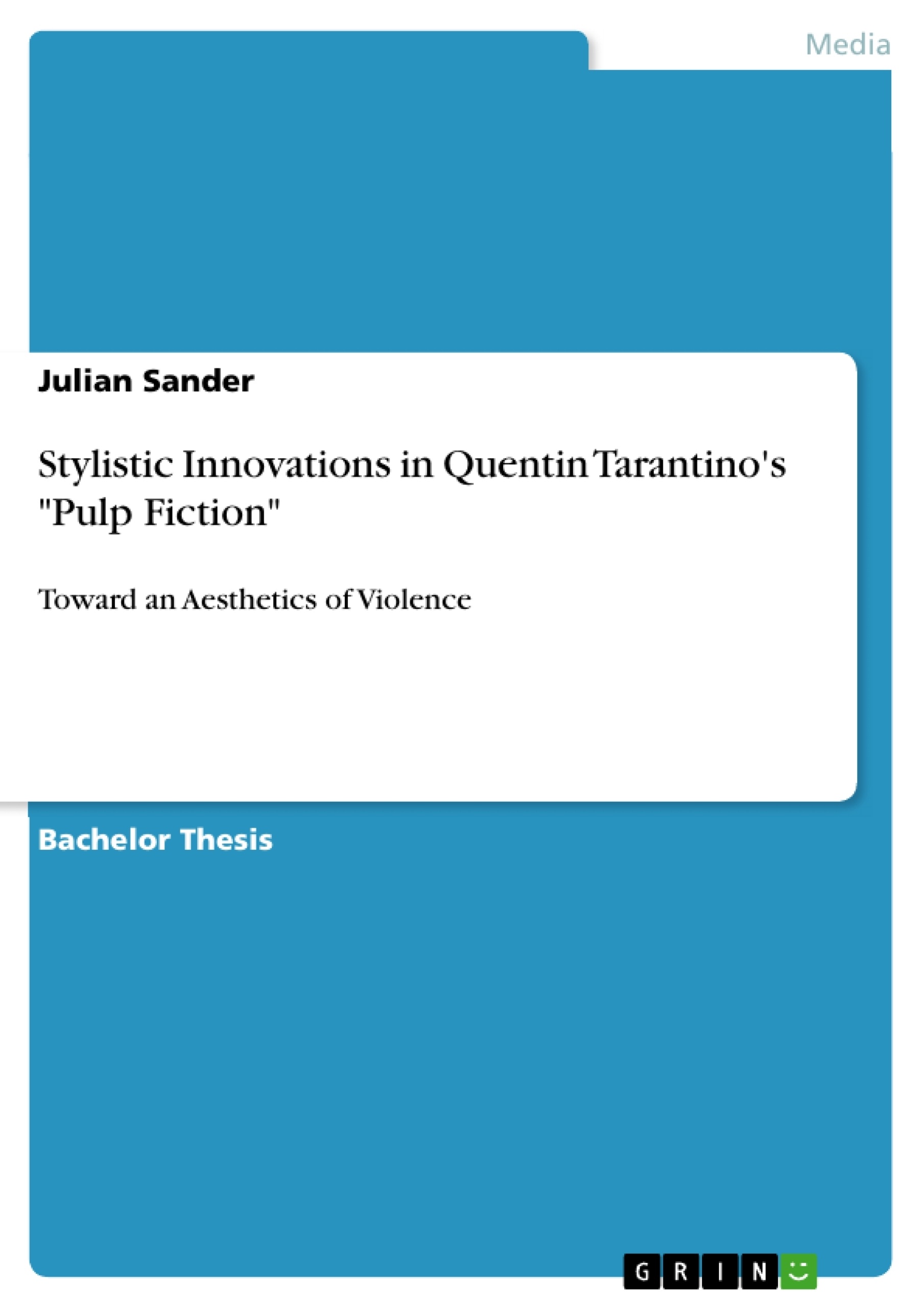The influence of Quentin Tarantino’s Pulp Fiction on contemporary American cinema has been profound in the last two decades. It was actually Tarantino’s second film after his already groundbreaking debut Reservoir Dogs, both of which he wrote and directed, though it was Pulp Fiction that ultimately established its creator as an influential filmmaker and made him legendary around the world.
Tarantino’s affection for different film genres can be noticed throughout all of his films. He usually pays tribute to them by using his distinct knowledge of their conventions and blending them into his own films. It is not that he just replicates them; in fact, he adds refreshing stylistic elements and recreates them into completely new shapes. His films also are full of references to a variety of different movies as well as diverse pop cultural minutiae. The assembly of numerous generic influences in one single movie, which Tarantino consciously practices, can be identified as characteristic of his distinctive style. These features as well as the filmmaker’s novelistic approach to narrative construction have become his own, artistic signature. As in Pulp Fiction, conventions of classical gangster films are incorporated and reworked so that it becomes something fresh and innovative.
On the basis of Tarantino’s standing in the film industry due to Pulp Fiction, I wish to analyze his most significant film toward its representation of violence, redemption and morality through the generic codes of a fictional crime world. While Tarantino’s aptitude to construct original and manifold storylines in an unconventional mode is undeniable, the aesthetics of violence and articulations of values behind his style have been constantly controversial. Since his latest film Inglourious Basterds (2009) this issue seems relevant again, which was one of the reasons that prompted me to revisit his previous work. In my thesis I intend to explore the director’s vision and his means of creating movies. I argue that Quentin Tarantino creates a new style of cinema in Pulp Fiction by subverting classical film conventions, most notably, those of the gangster genre. In doing so I want to answer these questions: How does the filmmaker utilize stylistic elements to subvert classical movie genres? What impact do stylistic changes have on the representation of violence and ethics? This attempt finally seeks to capture the essence of the filmmaker’s style within a larger cultural and social context.
Table of Contents
- Introduction
- 1 Background: Sketching the Gangster Film Genre
- 2 Pulp Fiction: Categorizing and Challenging Generic Codes
- Film Concept and Plot
- Gangster Stereotypes and Variations
- Traces of Film Noir
- 3 Identifying Narrative and Stylistic Qualities
- Narrative Form: A Novelistic Approach?
- Ironic Twists: Playing with Expectations
- Panache of Language
- 4 Determining the Essence of Style
- Aesthetics of Cinematic Violence
- Negotiating Values and Ethics
- Notes
- Appendix
- Works Cited
- Filmography
Objectives and Key Themes
The main objective of this thesis is to analyze Quentin Tarantino's significant film Pulp Fiction towards its representation of violence, depravity, redemption and morality through the generic codes of a fictional crime world. While Tarantino's aptitude to construct original and manifold storylines in an unconventional mode is undeniable, the aesthetics of violence and articulations of values behind his style have been constantly controversial. This thesis seeks to investigate the director's vision and his means of creating movies, arguing that Quentin Tarantino creates a new style of cinema in Pulp Fiction by subverting classical film conventions, most notably, those of the gangster genre.
- The influence of classical gangster and film noir conventions on Pulp Fiction
- Tarantino's unique approach to narrative construction, specifically the use of a non-linear structure
- The relationship between violence, humor, and the construction of the violent aesthetic in Pulp Fiction
- The exploration of ethical and moral dilemmas within the context of the film's violent aesthetic
- The subversion of traditional film conventions and the creation of a new stylistic form in contemporary American cinema
Chapter Summaries
The first chapter introduces the classical notion of the gangster film genre, outlining its key elements such as the gangster figure, the narrative structure, and the American Dream. It discusses how the gangster film genre emerged in the 1920s and its connection to the ideology of the American Dream.
The second chapter focuses on the specific conventions of the gangster and film noir genres that are employed in Pulp Fiction. It examines how Tarantino utilizes these conventions and then subverts them, ultimately moving beyond a postmodern pastiche and creating a distinct cinematic style.
The third chapter explores the narrative and stylistic qualities of Pulp Fiction, particularly its circular structure and the use of ironic twists. It analyzes how Tarantino's innovative approach to narrative construction influences the representation of violence and ethics in the film.
The fourth chapter delves deeper into the cinematic style of Pulp Fiction, specifically examining the relationship between violence, humor, and the creation of the violent aesthetic. It discusses the representation of values and ethics within the context of the film's violent aesthetic and explores the moral implications of Tarantino's stylistic choices.
Keywords
This thesis focuses on the analysis of Quentin Tarantino's Pulp Fiction, exploring its cinematic style and the relationship between violence, humor, and the representation of values and ethics. Key terms include: gangster film genre, film noir conventions, non-linear narrative, circular structure, violent aesthetic, ironic twists, redemption, morality, cultural and social context, postmodern cinema, and cinematic style.
- Quote paper
- Julian Sander (Author), 2010, Stylistic Innovations in Quentin Tarantino's "Pulp Fiction", Munich, GRIN Verlag, https://www.grin.com/document/168280



